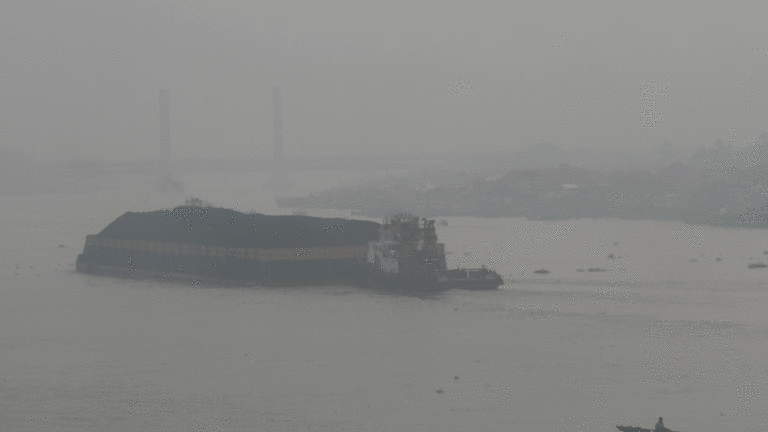Hazy Skies and Health Concerns as Fires Blaze Across Sumatra
PALEMBANG, Indonesia — Over 300 forest and peatland fires on Indonesia’s Sumatra island are shrouding the region in a thick haze, prompting authorities to advise people to work from home. These fires are currently raging across South Sumatra province, creating challenging conditions due to the persistently dry weather.
Iriansyah, the head of the South Sumatra Disaster Management Agency, reported that a joint effort involving the military, police, and local government is underway to combat the blazes. Unfortunately, their progress is hindered by the unfavorable climate conditions.
The smoky haze has drifted towards Palembang, the capital of South Palembang province, causing air quality to plummet, affecting the health of its 1.7 million residents. Iriansyah, who, like many Indonesians, uses a single name, warned of the risk of respiratory tract infections, coughing, shortness of breath, and eye irritation.
As the haze worsened, South Sumatra’s government made the decision to delay school opening times last week. However, as conditions deteriorated, schools opted to switch to online classes, categorizing the air quality as “dangerous.”
Umi Kalsum, a private sector worker and mother, expressed concern about the situation, saying, “We are worried as the haze is getting worse in Palembang. … Many children are sick, and we can only pray that this disaster will pass quickly.”
Indonesia grapples with forest and peat fires annually, which also strain relations with neighboring countries. The resulting smoke affects not only Indonesia but also Singapore, Malaysia, and southern Thailand. Parts of Malaysia reported experiencing Indonesian haze since the previous week.
Wan Abdul Latiff Wan Jaffar, Malaysia’s Environment Department chief, attributed the return of smog to Indonesian forest fires in some parts of the country, noting, “Overall, air quality in the country has deteriorated.”
Contrarily, Indonesia’s Environment and Forestry Minister, Siti Nurbaya Bakar, stated on Monday that there is no transboundary haze from Indonesia to Malaysia, backed by satellite data from Indonesia’s Meteorology, Climatology, and Geophysics Agency. The data shows that the haze is confined to specific areas in Sumatra and Borneo islands, primarily due to wind patterns from southeast to northwest-northeast.
Authorities are actively working on the ground and in the air to extinguish the fires in South Sumatra, Central Kalimantan, South Kalimantan, and certain areas in Java.
In September, Indonesia’s National Disaster Management Agency identified six provinces where forest and peatland fires are most prevalent, including South Sumatra province, which experienced a significant peatland fire that raged for several days in August.

